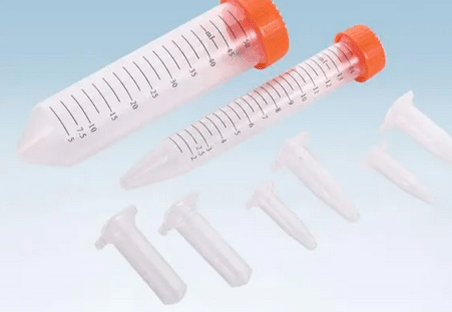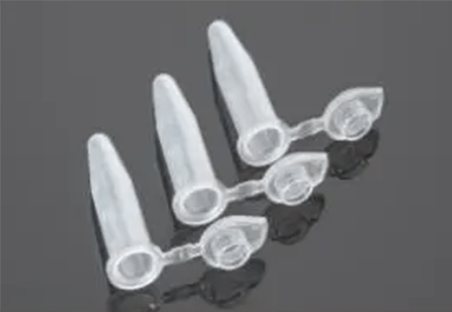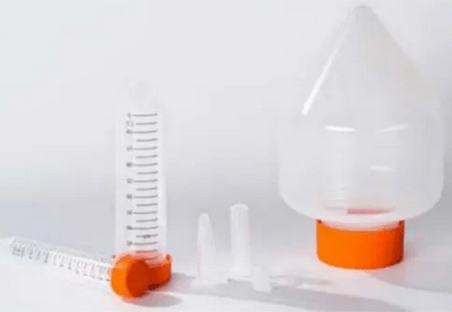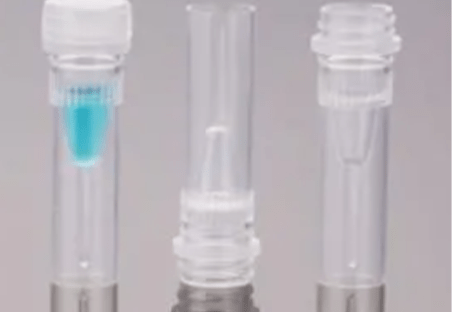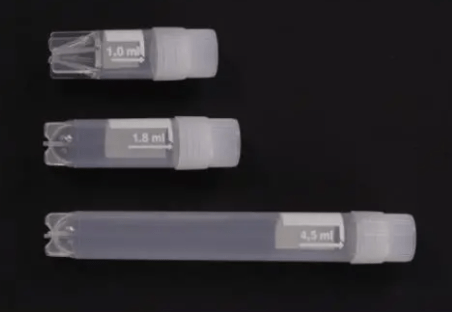Microcentrifuge tubes are indispensable tools in the realm of biomedical research, facilitating the handling, storage, and analysis of minute biological samples. Among the diverse array of microcentrifuge tube designs available, screw cap microcentrifuge tubes stand out for their versatility and reliability. In this article, we delve into the benefits and considerations associated with the utilization of screw cap microcentrifuge tubes in biomedical research.
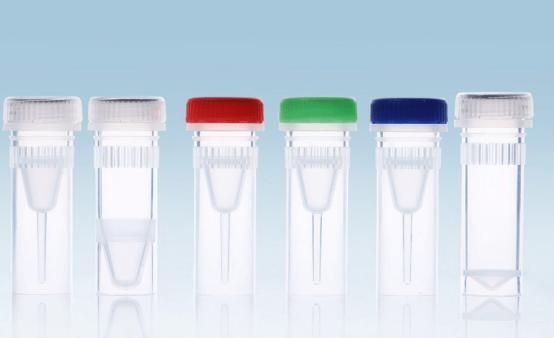
Design and Construction of Screw Cap Microcentrifuge Tubes
Screw cap microcentrifuge tubes are meticulously designed and constructed to meet the demanding requirements of biomedical research and laboratory applications. Their design and construction play a pivotal role in ensuring sample integrity, reliability, and usability throughout various experimental procedures. Here are the key aspects of the design and construction of screw cap microcentrifuge tubes:
Design Features:
- Tube Shape and Size: Screw cap microcentrifuge tubes typically exhibit a cylindrical shape with conical bottoms, facilitating efficient sample recovery and sedimentation during centrifugation. They are available in a variety of sizes ranging from microcentrifuge tubes (0.5 mL) to larger volumes (up to 2 mL or more), catering to diverse sample volumes and experimental requirements.
- Threaded Cap Mechanism: The distinguishing feature of screw cap microcentrifuge tubes is their threaded cap mechanism, which enables secure sealing and containment of biological samples. The cap threads are precisely engineered to ensure a tight seal, minimizing the risk of sample leakage, evaporation, or contamination during handling, storage, and transportation.
- Material Composition: Screw cap microcentrifuge tubes are typically fabricated from high-quality, autoclavable plastics such as polypropylene (PP), polyethylene (PE), or polycarbonate (PC). These materials offer exceptional chemical resistance, clarity, and temperature stability, ensuring compatibility with a wide range of laboratory reagents, solvents, and temperatures encountered during experimental procedures.
- Visible Graduations: Many screw cap microcentrifuge tubes feature visible volume graduations along the sidewalls, facilitating accurate sample preparation and measurement. These graduations allow researchers to precisely aliquot or dilute samples without the need for additional measuring devices, enhancing workflow efficiency and minimizing experimental variability.
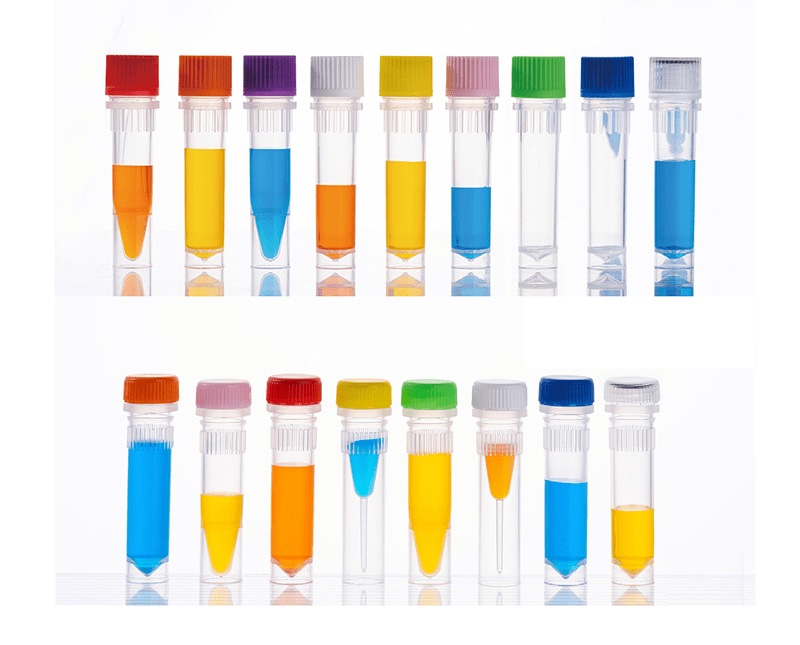
Construction Characteristics:
- Durability and Strength: Screw cap microcentrifuge tubes are engineered to withstand rigorous laboratory conditions, including centrifugation, vortexing, and temperature extremes. The robust construction ensures structural integrity and sample containment under mechanical stress, minimizing the risk of tube breakage or sample loss during experimental procedures.
- Leak-Proof Sealing: The screw cap design incorporates a sealing gasket or O-ring within the cap assembly, creating a hermetic seal between the cap and tube. This leak-proof sealing mechanism prevents sample leakage or contamination, even under dynamic conditions such as centrifugation or agitation, ensuring sample integrity and experimental reproducibility.
- Chemical Compatibility: Screw cap microcentrifuge tubes exhibit excellent chemical compatibility with a wide range of laboratory reagents, buffers, and solvents commonly used in biomedical research. The inert nature of plastic materials mitigates the risk of sample interaction or leaching, preserving sample purity and minimizing experimental artifacts.
- Clarity and Transparency: Many screw cap microcentrifuge tubes feature transparent or translucent walls, allowing for easy visualization of sample contents and clarity of experimental observations. Clear tubes facilitate visual inspection of sample quality, sedimentation, or color changes, enhancing data interpretation and experimental troubleshooting.
- Sterility and Contamination Control: Screw cap microcentrifuge tubes are manufactured under stringent quality control protocols to ensure sterility and contamination control. They are supplied in sterile, DNAse/RNAse-free, and pyrogen-free configurations, minimizing the risk of sample cross-contamination and preserving sample integrity for downstream applications such as molecular biology and cell culture.
In summary, the design and construction of screw cap microcentrifuge tubes are meticulously engineered to meet the exacting standards of modern biomedical research laboratories. By incorporating robust materials, precision manufacturing techniques, and innovative sealing mechanisms, screw cap microcentrifuge tubes offer unparalleled sample protection, reliability, and usability in a diverse array of experimental workflows. Their continued evolution and refinement contribute to the advancement of scientific discovery and technological innovation in the biomedical sciences.
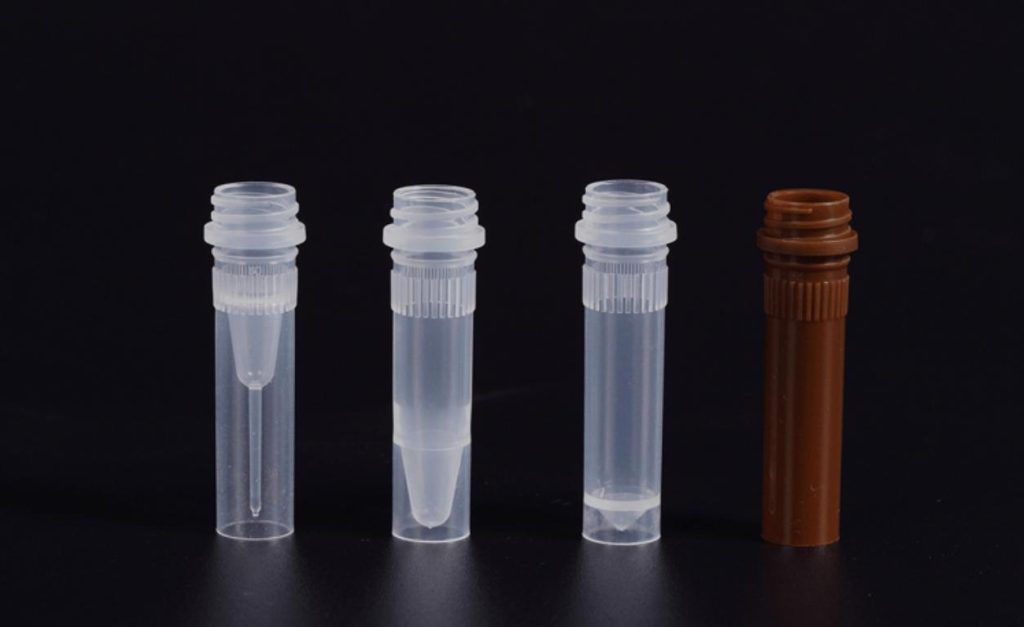
8 Benefits of Screw Cap Microcentrifuge Tubes in Biomedical Research
Screw cap microcentrifuge tubes play a pivotal role in biomedical research, offering a multitude of benefits that contribute to the efficiency, reliability, and reproducibility of experimental protocols. Here are several key advantages of screw cap microcentrifuge tubes in biomedical research:
- Secure Sample Containment: Screw cap microcentrifuge tubes feature threaded caps that provide a secure and tight seal, minimizing the risk of sample leakage, evaporation, or contamination. This secure containment is essential for preserving sample integrity and ensuring reliable experimental results, particularly when handling precious or sensitive biological specimens.
- Leak Resistance: The threaded cap design of screw cap microcentrifuge tubes enhances leak resistance, preventing sample loss or cross-contamination during centrifugation, mixing, or storage. This feature is critical for maintaining sample purity and preventing experimental artifacts that could compromise data interpretation and scientific conclusions.
- Versatility: Screw cap microcentrifuge tubes are compatible with a wide range of laboratory equipment and experimental techniques, including centrifugation, vortexing, heating, and cooling. Their versatility allows researchers to seamlessly integrate them into diverse experimental workflows, enhancing experimental flexibility and productivity.
- Sample Protection: The durable construction of screw cap microcentrifuge tubes provides a protective barrier against external factors such as temperature fluctuations, light exposure, and mechanical stress. This protection helps preserve sample stability and viability over extended periods, ensuring the reliability of experimental outcomes and downstream analyses.
- Convenient Labeling and Identification: Many screw cap microcentrifuge tubes feature flat or frosted surfaces that facilitate convenient labeling and identification of samples. Researchers can easily annotate essential information such as sample type, concentration, date, and experimental conditions, streamlining data management and retrieval processes.
- Graduated Markings: Screw cap microcentrifuge tubes often include visible volume graduations along the sidewalls, enabling accurate sample preparation and measurement without the need for additional measuring devices. These graduated markings enhance experimental precision, minimize sample waste, and optimize resource utilization.
- Autoclavability: Most screw cap microcentrifuge tubes are autoclavable, allowing for convenient sterilization and decontamination between experimental procedures. Autoclaving ensures the elimination of microbial contaminants and minimizes the risk of sample cross-contamination, maintaining the integrity of biological materials and experimental reproducibility.
- Cost-Effectiveness: Screw cap microcentrifuge tubes are available in a variety of sizes, materials, and packaging configurations to suit diverse research needs and budgetary constraints. Their cost-effectiveness, coupled with reusable and autoclavable features, makes them a practical choice for high-throughput screening, sample storage, and routine laboratory applications.
In summary, screw cap microcentrifuge tubes offer a myriad of benefits in biomedical research, ranging from secure sample containment and leak resistance to versatility, sample protection, and cost-effectiveness. By leveraging these advantages, researchers can optimize experimental workflows, minimize experimental variability, and advance scientific knowledge in fields such as molecular biology, biochemistry, cell biology, and diagnostics.
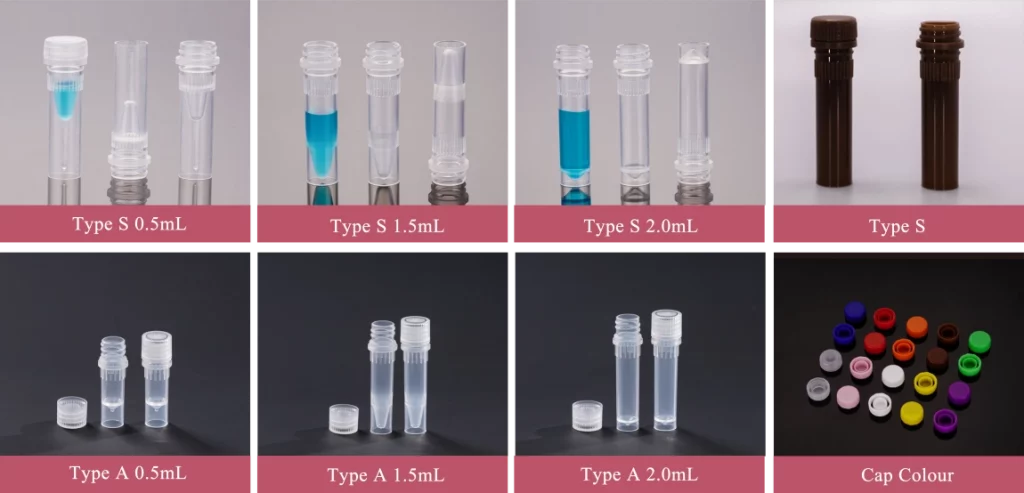
Considerations for Biomedical Research Applications
Screw cap microcentrifuge tubes find diverse applications across various domains of biomedical research due to their versatility, reliability, and convenience. Here are some of the primary applications and considerations of screw cap microcentrifuge tubes in biomedical research:
Applications in Biomedical Research
- Sample storage and processing: These tubes are ideal for storing and processing biological samples like:
- Cells: Used for cell cultures, cell lysates, and cell suspensions.
- Nucleic acids: Storing DNA, RNA, and plasmids for various downstream applications like PCR, qPCR, and gel electrophoresis.
- Proteins: Useful for protein purification, storage of protein lysates, and enzyme assays.
- Other biomolecules: Can store other biomolecules like lipids, carbohydrates, and metabolites.
- Centrifugation: Screw cap tubes are designed to withstand high centrifugal forces (RCF) typically encountered during centrifugation, making them suitable for:
- Pelleting cells: Separating cells from their culture medium.
- Isolating nucleic acids: Purifying DNA and RNA from cell lysates.
- Precipitating proteins: Pelleting proteins after purification steps.
- Mixing and aliquoting: The secure screw cap allows for efficient mixing of samples by vortexing without the risk of leakage. They are also suitable for aliquoting samples into smaller volumes for further experiments.
- PCR and qPCR: These tubes are compatible with thermal cyclers for PCR and qPCR applications due to their ability to withstand high temperatures.
- Cryopreservation: Screw cap tubes can be used for cryopreserving biological samples at ultra-low temperatures with the proper cryovials and storage conditions.
Considerations for Using Screw Cap Microcentrifuge Tubes
While offering numerous advantages, there are some factors to consider when using screw cap microcentrifuge tubes:
- Cost: Screw cap tubes are generally more expensive than snap-cap tubes.
- Time: Opening and closing screw caps can be slightly slower than snap caps.
- Compatibility: Ensure the tubes are compatible with the specific equipment used, such as centrifuges and thermal cyclers.
- Volume: Choose the appropriate volume based on the sample amount and application requirements.
- Sterility: Opt for sterile tubes for applications requiring aseptic conditions.
Overall, screw cap microcentrifuge tubes offer a valuable tool for various applications in biomedical research, providing secure storage, efficient processing, and compatibility with various techniques.
Conclusion
In conclusion, screw cap microcentrifuge tubes represent indispensable tools in biomedical research, offering a myriad of benefits including secure sealing, leak resistance, versatility, sample protection, and convenient labeling. By carefully considering material selection, centrifugation compatibility, autoclavability, sample volume, and quality assurance measures, researchers can maximize the efficacy and reliability of experimental outcomes. As technology continues to advance, the evolution of screw cap microcentrifuge tubes is poised to further enhance the precision and efficiency of biomedical research endeavors.
